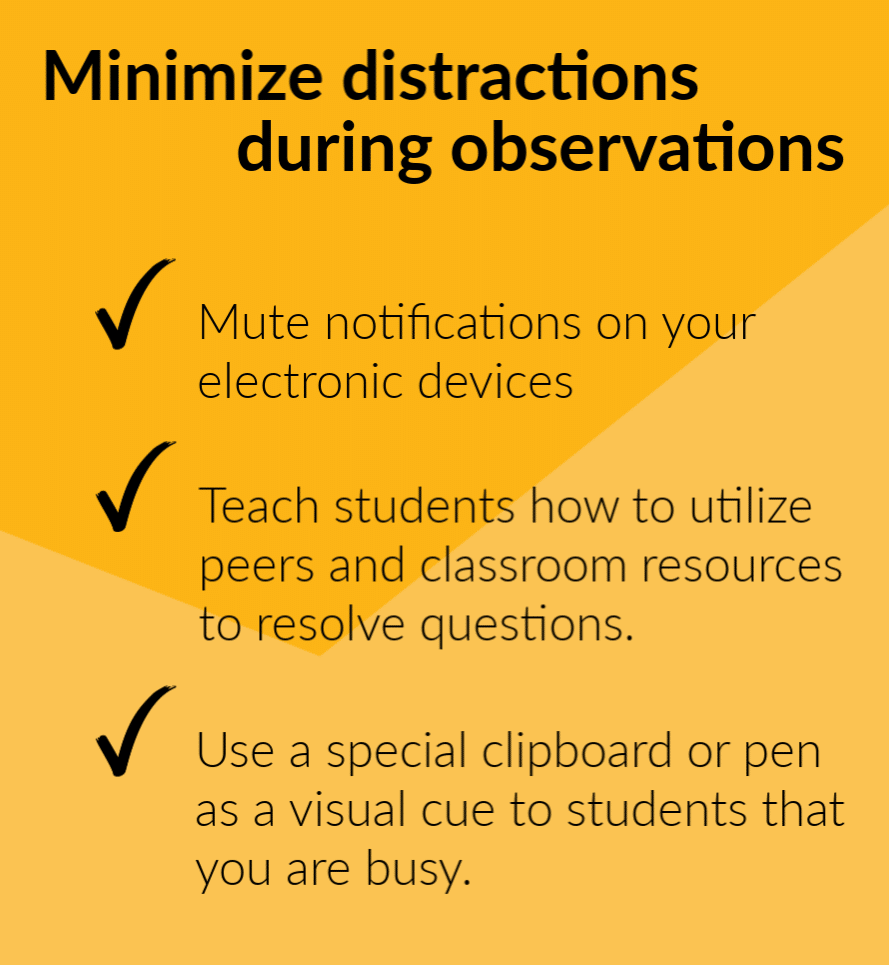This time of year, it can be easy to begin thinking that we’ve got students all figured out. We’ve had them in our classrooms for a couple of months, refreshed our knowledge of developmental strengths and needs, administered initial assessments, reviewed benchmark data, and have likely had one (or more) conferences or calls with most families. This early knowledge can trick us into believing that we already thoroughly know our students and have all the information we require to plan rich lessons and rigorous instruction.
While preliminary information can provide a solid foundation for knowing students, truly responsive teaching is rooted in careful, continuing observation. Responsive Classroom teachers use observation as a professional practice and utilize what is gleaned to design (and redesign) instructional activities to more authentically reflect their students’ immediate strengths, needs, interests, and concerns.
Following are strategies and structures to help hone observation practices and use the information you gather to guide future instruction and enhance student engagement.

Incorporate observation into teaching routines. To make observation a habit, determine a few predictable times of day or aspects of lessons when you will make observation a priority. To support your focus, take steps to minimize potential distractions during these times.
Know what to look for. There is almost infinite information we can learn by simply taking a step back to watch, listen to, and learn from students, so it can be daunting to decide where to begin. A few focus areas to consider as you get started might be:
Plan how you’ll take and organize notes. Some observers prefer tactile methods (sticky notes, tabbed folders, index cards, recipe boxes), while others prefer digital systems (cloud-based folders, note-taking apps, spreadsheets). To make the most of your observations, make a plan for how you will take and organize your notes.
Know your lens. Our own culture, personality, prior experiences, current mood, and more shape our observational lens. Before observations, clear your lens by acknowledging potential biases, emotions, or interests that may cloud your vision.
Take objective notes. Work to describe rather than label; focus on facts (actions, words, behaviors) over impressions (motivations, intentions, capacities).
| Instead of: | Try: |
|---|---|
| Bossed the group around; tries to control others | Initiated discussion for group decision on presentation format; directed 2 teammates to ‘Small Group Roles’ anchor chart |
| Always motivated to do their best and dedicated to their work | Used 2 problem-solving strategies and 3 classroom resources to complete task |
| Impatient with and easily frustrated by new partner | Reminded new partner of their responsibilities 3 times, then collected materials (partner’s job) |
| Disinterested and apathetic again today in reading | Gazed out window during read-aloud; shrugged shoulders when partner asked where they wanted to begin |
Stay curious. Pause assumptions about what students can and can’t do, do and don’t like, and how they learn best. Instead, offer choice and observe to learn what students choose and how their choices support their engagement and practice. A general rule of thumb: look to be surprised rather than right (when you do, you likely will be.)
Make reflection and planning part of your observation protocols. Identify a predictable time of day (15-30 minutes) to dedicate to observation reflections and next steps. Start by taking a few minutes to review, clarify, and consolidate your notes. Then, look for ways to use what you learned to benefit future content and better engage students in their learning.
When reviewing notes, look to identify strengths students can build from, rather than deficits to be filled.
| Notes: | Strengths to build from: |
|---|---|
| Partners discuss next steps, _____ jumps up and directs partner what their new role and responsibilities will be | Used skills in assertiveness & responsibility. • 1-on-1 model/practice asking questions that invite discussion and guide responsible collaboration |
| Class takes 2-3 minutes longer than usual to return after lunch | Showed self-control: walking in lines, using quiet waves to greet friends passing by. • Reinforce collective self-control in hallways; use open-ended questions to brainstorm ways success strategies could be adapted to support group responsibility with travel time |
When planning next steps, note specific opportunities to incorporate students’ interests and needs into upcoming instructional activities.
| Notes: | Implications for instruction |
|---|---|
| Math: small groups—4 groups distracted from solving problems by intense debate (hot topics: composting, animals housed in pet stores) | Tomorrow, Morning Message: “What are some qualities of responsible pet owners?”; Math: assign practice partners Friday, Science: Use similar debates to launch Renewable and Nonrenewable Resources unit |
For more information about the strategies and structures discussed here, as well as other ideas for purposeful observation, check out:
Written by Lindsey Lynch, Responsive Classroom Consulting Teacher, and Educational Consultant and Coach